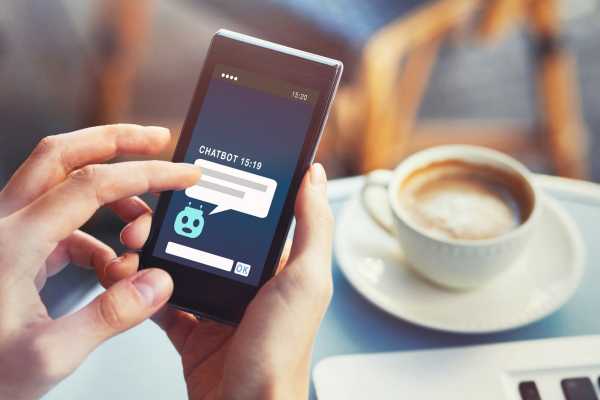Nowadays, automation is a powerful tool for businesses of all sizes.
Among the various options available, WhatsApp bots stand out as one of the most effective solutions for improving customer service, streamlining processes, and optimizing resources.
Creating a bot on WhatsApp may seem like a complex task, but with the right tools and a step-by-step guide, it is possible to implement this technology simply and efficiently.
In this article, we will explain how to create a WhatsApp bot in a straightforward manner, considering best practices and available tools.
Additionally, we will share examples of companies that use this technology to enhance customer interactions, increase productivity, and drive results.
What is a WhatsApp Bot?
Before diving into the step-by-step process of creating a WhatsApp bot, it’s essential to understand what a bot is and how it works on the messaging platform.
A WhatsApp bot is an automated program that interacts with users intelligently, sending automatic responses, providing information about products or services, and even resolving simple issues without human intervention.
These bots can be configured to answer frequently asked questions, schedule appointments, provide order updates, and even send personalized messages at specific times.
With the growing demand for instant communication, WhatsApp bots have become one of the most popular and effective ways for businesses to interact with consumers.
Why Create a WhatsApp Bot?
The adoption of WhatsApp bots offers several benefits for businesses, especially in improving the customer experience. Let’s explore some of the main advantages of using this technology:
1. 24/7 Customer Support
With a WhatsApp bot, your business can provide customer service at any time of the day, every day of the week. This is particularly important in a world where consumers expect quick responses at any time.
2. Saves Time and Resources
Automating responses to frequently asked questions, for example, frees up the customer service team to handle more complex issues. This helps increase productivity and reduce operational costs.
3. Improved Customer Experience
By providing quick and personalized responses, bots enhance the customer experience, making interactions more agile and efficient. Additionally, they can be configured to send relevant messages based on user behavior, increasing engagement.
4. Higher Conversion Rates
A well-configured bot can guide customers through the purchasing journey, answer questions in real-time, and offer product suggestions. This can result in higher conversion rates and, consequently, more sales.
Step-by-Step Guide to Creating a WhatsApp Bot
Now that we understand the importance of WhatsApp bots, let’s get to the main point: how to create a WhatsApp bot. We’ll break the process down into simple steps so you can implement the solution effectively.
Step 1: Choose the Right Tool to Create the Bot
The first step in creating a WhatsApp bot is selecting the tool that will be used for configuration. Several options are available in the market, such as Twilio, Zenvia, Take Blip, among others. The choice of tool depends on factors like:
- Ease of use: Some platforms are more intuitive and require less technical knowledge.
- Features: Ensure that the chosen tool offers the features your business needs.
- Cost: Prices can vary significantly depending on the platform, so it’s essential to analyze cost-benefit.
One of the standout tools in the market is Nexloo, which provides a robust platform for creating WhatsApp bots. With easy integration, advanced automation options, and dedicated support, Nexloo is an excellent choice for businesses of all sizes.
Step 2: Define Your Bot’s Objective
Before creating your bot, it is crucial to define its objective. Will the bot primarily focus on customer service? Will it automate sales processes? Or will it be used to send order updates?
Clearly defining an objective will help structure the conversation flow and messages the bot will send. For example, if your goal is to improve customer service, the bot can be configured to answer common questions, such as business hours, product information, and return policies.
Step 3: Create Conversation Flows
Creating conversation flows is one of the most important steps in setting up a bot. A well-designed flow ensures that the bot guides users intuitively without causing confusion or frustration.
You can use platforms like Nexloo to create conversation flows based on multiple-choice options, keywords, or even more complex interactions, such as integration with internal systems to respond to specific queries.
Step 4: Customize the Bot for Your Business
Customization is essential to ensure the bot aligns with your company’s identity. This includes:
- Tone of voice: The bot should communicate in the same tone your company uses on other platforms.
- Personalized information: Provide relevant content, such as promotions, product suggestions, or updates based on user behavior.
- Design: Some platforms, like Nexloo, allow you to customize the bot’s interface to reflect your brand’s visual identity.
Step 5: Test the Bot Before Launching
Before going live, testing the bot is crucial to ensure it functions as expected. During testing, verify that:
- Responses are delivered correctly.
- The conversation flow is smooth and intuitive.
- There are no typos or technical errors.
You can also simulate real interactions to evaluate how the bot behaves in different scenarios.
Step 6: Launch and Monitor Performance
After testing, it’s time to launch the bot to the public. However, creating a bot is not a one-time task. To ensure it continues to meet customer needs, it’s important to monitor its performance and make adjustments as needed.
Nexloo provides detailed reports that allow businesses to analyze user interactions and identify areas for improvement.
Real-World Examples of Companies Using WhatsApp Bots
Now, let’s look at some examples of companies that have successfully implemented WhatsApp bots.
1. iFood
iFood is a great example of how WhatsApp bots can enhance customer experience. The company implemented a bot to streamline the ordering process and track delivery status. As a result, users can place orders, check delivery status, and resolve common issues without speaking to a live agent.
2. Hapvida
Health insurance provider Hapvida created a WhatsApp bot for appointment scheduling and sending exam result notifications. The outcome was a significant increase in customer satisfaction, as clients could complete these tasks quickly and conveniently without calling customer service.
Conclusion
Creating a WhatsApp chatbot may seem like a challenging task, but as we’ve seen in this article, choosing the right tools and planning effectively makes the process simple and efficient.
Automation offers benefits such as 24/7 customer service, cost savings, and a faster, more engaging customer experience, ultimately leading to more sales and increased customer loyalty.
Nexloo stands out as an ideal solution for businesses looking to implement WhatsApp bots quickly and with high performance.
With advanced features, easy integration, and specialized support, Nexloo is the best choice for companies seeking an efficient and easy-to-manage automation solution.
Don’t miss the opportunity to leverage WhatsApp’s potential for your business. The future of customer service is here, and bots are the key to unlocking the full power of this technology.




